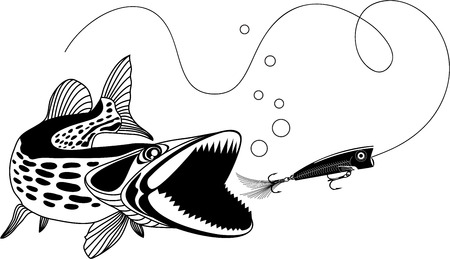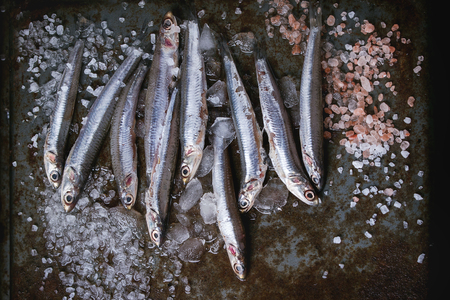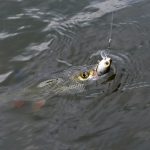1. Understanding Catch and Release
Catch and release is a fishing practice where anglers catch a fish, then carefully return it to the water instead of keeping it. This technique has become increasingly popular among recreational fishing communities across the United States, especially as awareness around sustainable fisheries management grows.
Origins of Catch and Release
The concept of catch and release began gaining traction in North America during the mid-20th century. Originally rooted in conservation efforts, it was promoted by biologists and sportfishing organizations aiming to preserve fish populations and maintain healthy ecosystems. Over time, this approach became a standard practice in many states, particularly in areas with high fishing pressure or limited fish stock.
Purpose of Catch and Release
The primary goal of catch and release is to support long-term sustainability in both freshwater and saltwater fisheries. By releasing fish unharmed, anglers help reduce harvest rates, protect spawning populations, and ensure that future generations can enjoy fishing too. This method also allows for the enjoyment of the sport without causing significant impact on local fish numbers.
Key Purposes of Catch and Release
| Purpose | Description |
|---|---|
| Conservation | Protects fish populations by reducing mortality rates |
| Sustainability | Keeps fish stocks healthy for future generations |
| Sporting Tradition | Allows anglers to enjoy fishing while minimizing ecological impact |
Cultural Relevance in U.S. Fishing Communities
Catch and release has become part of the culture in many American fishing circles, especially among fly fishermen, bass anglers, and those targeting trophy species like trout or muskie. In places like Montana, Colorado, Florida, and along the Pacific Northwest, anglers often take pride in their role as stewards of nature. State agencies and local organizations have also promoted education on proper catch and release techniques to improve survival rates for released fish.
A Growing Trend Among U.S. Anglers
This approach isn’t just about science—it’s about values shared by millions of outdoor enthusiasts who care deeply about preserving natural resources. Whether fishing from a kayak in Texas or wading through streams in Pennsylvania, more Americans are embracing catch and release as a way to connect with nature responsibly.
The next section will explore the techniques involved in successful catch and release to maximize its effectiveness.
2. Biological Benefits for Fish Populations
Catch and release fishing plays a big role in keeping fish populations healthy and balanced. When anglers carefully release fish back into the water, it helps prevent overfishing and gives fish a chance to grow, reproduce, and support future generations. This practice is especially important in areas where certain species are under pressure from habitat loss or heavy fishing activity.
How Catch and Release Helps Fish Stocks
By letting fish go instead of keeping them, we help maintain natural population levels. This is key to making sure there are enough fish for future anglers and for the ecosystems that depend on them. Healthy fish stocks also mean better chances of catching bigger, stronger fish down the line.
Key Benefits at a Glance
| Benefit | Description |
|---|---|
| Reduces Overfishing | Lessens pressure on fish numbers by returning caught fish to their habitat. |
| Supports Reproduction | Allows mature fish to spawn and increase population size naturally. |
| Protects Vulnerable Species | Helps conserve species that are endangered or under strict regulations. |
| Improves Long-Term Fishing Quality | Keeps fisheries productive for recreational and commercial use alike. |
The Science Behind Survival Rates
Studies show that when done correctly, catch and release can have high survival rates—sometimes over 90%. The key is using proper gear (like barbless hooks), handling fish gently, and minimizing the time theyre out of water. These small steps make a huge difference in whether a released fish thrives or not.
Tips for Better Survival Rates:
- Use circle or barbless hooks to reduce injury.
- Avoid touching the gills and always wet your hands before handling.
- Keep the fish in water as much as possible during unhooking.
- If the fish shows signs of stress, allow it extra time to recover before releasing.
Catching and releasing isnt just about sport—its about taking care of our waters so everyone can enjoy fishing for years to come. By understanding the biological benefits, anglers can make smarter choices that help keep fish populations strong and sustainable.

3. Best Practices for Ethical Catch and Release
Catch and release is more than just letting a fish go—it’s about doing it in a way that gives the fish the best chance to survive and thrive after being caught. American anglers have developed proven methods and gear preferences that help minimize stress and injury to fish. Let’s break down some of these best practices so you can fish responsibly and support sustainable fisheries.
Use the Right Gear
The right tools make a big difference when it comes to ethical catch and release. Using barbless hooks, rubber nets, and proper tackle helps reduce harm to fish during handling and release. Here’s a quick guide:
| Gear Type | Recommended Option | Why It Helps |
|---|---|---|
| Hooks | Barbless or circle hooks | Easier to remove, reduces injury |
| Nets | Rubber or knotless mesh nets | Less damage to scales and slime coat |
| Tackle | Tackle suited for target species size | Avoids prolonged fights that exhaust fish |
Handle Fish With Care
Once you’ve landed a fish, how you handle it plays a big role in its survival. Always wet your hands before touching the fish to protect its slime layer, which helps prevent infection. Avoid squeezing tightly or holding the fish by the gills.
Tips for Proper Handling:
- Keep the fish in the water as much as possible.
- If lifting for a photo, support the body horizontally with two hands.
- Avoid placing the fish on dry or hot surfaces.
- If using a net, keep it submerged during hook removal.
Minimize Air Exposure Time
The less time a fish spends out of water, the better. Try to keep air exposure under 10 seconds if possible. Prepare your camera or phone before lifting the fish so you’re ready for a quick shot.
Revive Before Releasing
If the fish seems tired, take a moment to revive it by gently holding it in the water, facing upstream, so that fresh oxygen flows through its gills. Wait until the fish swims away strongly on its own before letting go.
A Quick Checklist for Ethical Catch and Release:
- [ ] Use barbless or circle hooks
- [ ] Handle with wet hands or gloves made for fishing
- [ ] Keep air exposure under 10 seconds
- [ ] Support the fish horizontally when lifting
- [ ] Revive tired fish before release
- [ ] Use rubber landing nets to avoid scale damage
- [ ] Match tackle strength to target species size
Caring for each catch—even those we don’t keep—is part of being a responsible angler. By following these practices, we contribute to healthy fish populations and protect our favorite fisheries for generations to come.
4. Balancing Recreation and Conservation
Catch and release fishing plays a vital role in supporting sustainable fisheries while allowing anglers to enjoy the sport they love. In the United States, recreational fishing is not just a hobby—its a cherished tradition that brings families and friends together, boosts local economies, and connects people with nature. However, with millions of anglers casting lines each year, its important to manage fish populations responsibly.
Catch and release helps strike a balance between recreation and conservation. By releasing fish back into the water, anglers help maintain healthy fish stocks for future generations. This practice ensures that fishing remains available and enjoyable without putting too much pressure on specific species or habitats.
Why Catch and Release Matters
Catch and release contributes to sustainable fisheries by:
- Reducing overfishing: Fewer fish are removed from the ecosystem.
- Protecting breeding populations: Mature fish can continue to reproduce.
- Supporting biodiversity: Helps maintain balanced aquatic ecosystems.
Benefits for Sport and Hobby Anglers
This approach allows anglers to continue enjoying their pastime while being part of the conservation effort. Heres a look at how catch and release benefits both fish populations and the angling community:
| Benefit | Impact on Fisheries | Impact on Anglers |
|---|---|---|
| Preserves Fish Populations | Keeps species numbers stable over time | Ensures ongoing fishing opportunities |
| Encourages Responsible Fishing | Lowers stress on vulnerable habitats | Promotes ethical angling practices |
| Supports Long-Term Access | Sustains ecological balance in waters | Keeps public waters open for recreation |
Making It Work: Tips for Effective Catch and Release
Catching and releasing fish properly makes a big difference. Here are some easy tips to improve survival rates:
- Use barbless hooks or circle hooks to reduce injury.
- Avoid keeping the fish out of water too long—ideally under 10 seconds.
- Wet your hands before handling fish to protect their slime coating.
- Release the fish gently back into the water, facing upstream if applicable.
By following these simple steps, anglers can enjoy their favorite outdoor activity while helping preserve our nation’s freshwater and saltwater resources. Catch and release isn’t just about letting go—it’s about giving back.
5. Challenges and Misconceptions
Catch and release fishing has become a widely accepted method in sustainable fisheries management, but it’s not without its critics. Many anglers and members of the public have questions or concerns about how effective and ethical this practice really is. Let’s take a closer look at some of the most common misconceptions and challenges surrounding catch and release.
Misconception #1: “Fish Always Die After Being Released”
This is one of the biggest myths about catch and release. While its true that some fish dont survive after being released, survival rates are generally high when proper techniques are used. The key factors that affect survival include how the fish is handled, the type of gear used, water temperature, and the species itself.
Estimated Post-Release Survival Rates by Species (Under Ideal Conditions)
| Species | Estimated Survival Rate |
|---|---|
| Largemouth Bass | 90–95% |
| Rainbow Trout | 85–90% |
| Redfish (Red Drum) | 90–98% |
| Striped Bass | 75–85% |
Using barbless hooks, wetting your hands before handling fish, minimizing air exposure, and releasing the fish quickly can greatly improve their chances of survival.
Misconception #2: “Catch and Release Is Cruel”
Some people argue that catch and release is unethical because it stresses or injures the fish. This concern is understandable, but research shows that when done correctly, the stress experienced by fish is temporary and recovery is often quick. In fact, responsible catch and release helps protect fish populations for future generations to enjoy.
Tips to Reduce Stress on Fish:
- Use circle hooks to reduce deep hooking
- Avoid fishing during extreme heat or cold
- Dont squeeze or drop the fish
- Support the fish horizontally when handling it
- If needed, revive the fish by gently moving it in the water to help oxygen flow over its gills before release
The Bigger Picture
The goal of catch and release isn’t just to avoid keeping fish—it’s about maintaining healthy ecosystems and ensuring that fish populations remain strong for both recreational enjoyment and ecological balance. While there are valid concerns, ongoing education and improved angling practices continue to make catch and release a valuable tool in sustainable fisheries management.
6. Policy Implications and Fisheries Management
In the United States, both state and federal agencies are increasingly recognizing the importance of catch and release as a tool for sustainable fisheries management. By encouraging anglers to release certain fish species back into the water, these agencies aim to maintain healthy fish populations, support recreational fishing opportunities, and protect vulnerable species from overharvesting.
How Agencies Use Catch and Release Policies
Catch and release regulations vary by region, species, and fishing method. Here’s how different levels of government are incorporating these practices:
Federal Level
Federal bodies like the National Oceanic and Atmospheric Administration (NOAA) manage fisheries in U.S. ocean waters. They implement size limits, seasonal closures, and mandatory gear regulations to promote successful release rates for key species such as red snapper or striped bass.
State Level
Each state has its own Department of Natural Resources (DNR) or equivalent agency that sets local fishing rules. These may include:
| State | Catch and Release Rules | Target Species |
|---|---|---|
| Florida | No harvest zones & seasonal closures | Tarpon, Snook |
| California | Barbless hooks required in certain rivers | Steelhead Trout |
| Montana | Certain waters designated catch-and-release only | Cutthroat Trout |
Public Education Programs
A big part of making catch and release work is teaching anglers how to do it right. Many agencies have launched outreach efforts that include:
- Workshops: Hands-on training at local events or fishing expos.
- Online Guides: Step-by-step instructions on proper handling techniques.
- YouTube Videos: Demonstrations by biologists and pro anglers.
- Signage at Fishing Spots: Quick tips posted at boat ramps and piers.
The Role of Regulations in Long-Term Sustainability
Catch and release isnt just about letting fish go—its about doing it effectively so they survive. Regulations help set standards for best practices while education ensures anglers understand the reasons behind the rules. When done together, they create a powerful combination that helps protect America’s fisheries now and for future generations.
Key Benefits of Regulatory Support
| Benefit | Description |
|---|---|
| Population Stability | Helps maintain healthy numbers of popular gamefish. |
| Biodiversity Protection | Aids in conserving species that are threatened or declining. |
| Sustainable Recreation | Keeps fishing accessible for future generations without depleting resources. |
By combining solid science, clear regulations, and public engagement, U.S. fisheries managers are making catch and release a cornerstone of modern conservation efforts.


